Sharing Perspectives
In team environments, Ultorg users collaborate by connecting to the same data source. For example, a shared database may be stored in a Google Sheets workbook, an Excel file in OneDrive, or in PostgreSQL. Your data remains private to your organization.
Ultorg's interaction design allows many concurrent users to work on the same database, without stepping on each others toes. For example:
- Each user can create and modify their own perspectives of the data, with filter state, grouping, and so on, without interference from other users.
- Data editing follows a staged approach, where edits can be prepared, reviewed, and then published to other users in a single explicit operation.
- External changes are pulled in and displayed only when the user explicitly requests it. Data will not “disappear from under your feet” because of changes made by another user.
- Each user can undo and redo their own operations, independently of external changes.
- Billing and license management can be done from a single user account.
There are two ways to share perspectives with other Ultorg users:
- Link to Perspective: Share a single perspective as an end-to-end encrypted URL link.
- Export Perspectives: Share folder of perspectives and data source configurations as a file.
We describe each method in detail below.
Link to Perspective
To quickly share the currently open perspective with other Ultorg users, click Create Link to Perspective in the Team menu. This produces a URL link that can be shared via email or chat, or which can be pasted into internal wikis, git repositories, or similar.

If the link is opened in a web browser, instructions will appear:

To open the link in the Ultorg desktop app, the receiving user copies the link and clicks Team→Open Link to Perspective. After confirming, the shared perspective will open.

The first time, you may be prompted to specify a data source. The name of the original data source is included with the shared data, but the actual data source configuration is not.
End-to-End Encryption
The data in perspective definitions, such as column names and selected filter values, is stored on Ultorg's server in encrypted form only. The encryption key is stored in the “hash” portion of the link (#...), which is never exposed to the server.
Encryption is done on the desktop client using the AES algorithm with a 256-bit key (as required e.g. by the US Department of Homeland Security).
As a security precaution, links can only be opened by Ultorg users who are either on the same email domain or the same billing account as the creator of the link. A password prompt may be displayed if the user did not already log in during product activation.
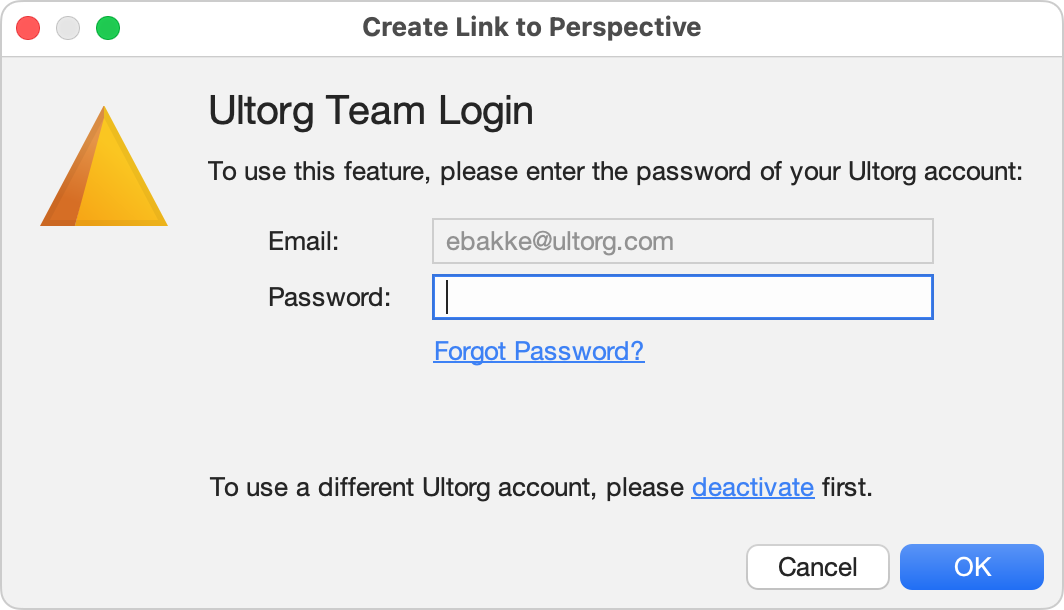
Updating Links
Links do not expire, though they can be updated or deleted by the user who created them.
When Create Link to Perspective is invoked on a perspective that the current user previously created a link for, a prompt is shown to either create a new link or update the existing one.
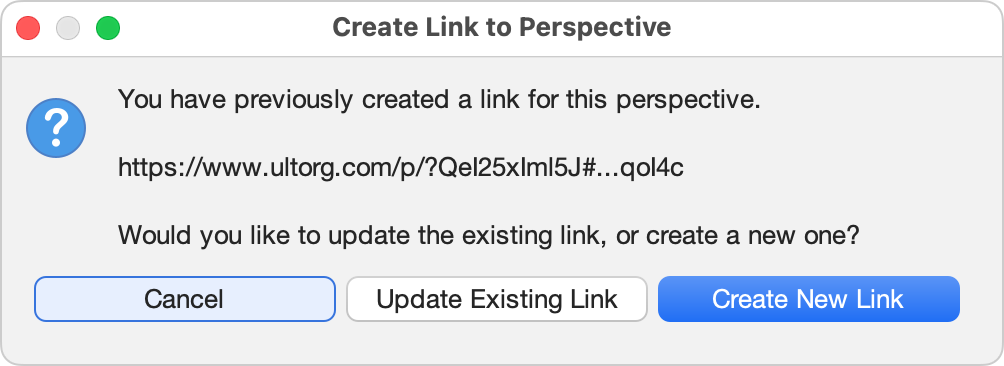
My Shared Links
A list of links created by the current user, minus each link's encryption key portion, can be seen on the My Shared Links page.
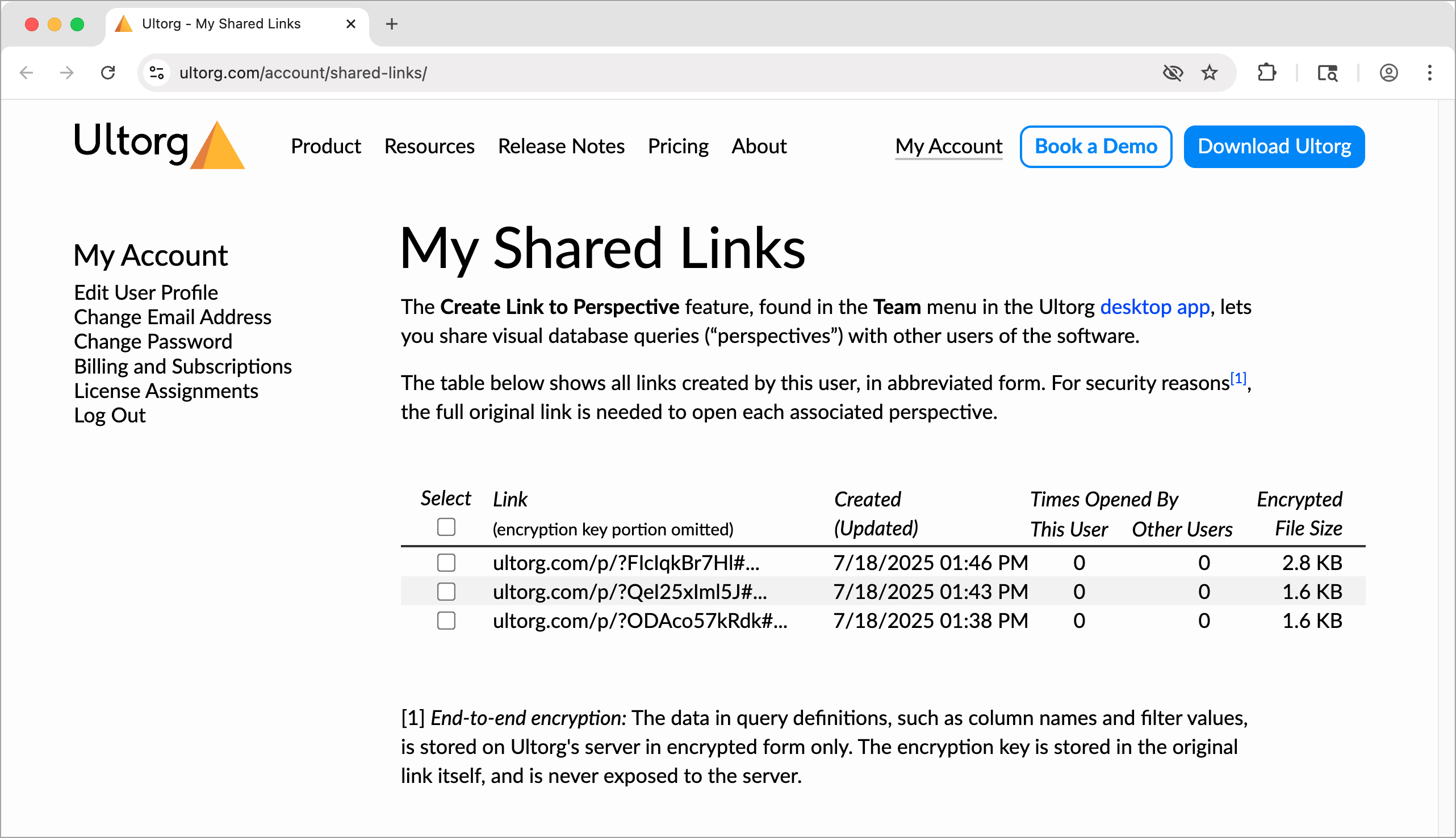
Export Perspectives
To save a full folder of perspectives and/or data source configurations for sharing with other users, or for transfer to another computer:
- Create a folder (
) for the exported items in the Folders sidebar. Alternatively, you can skip this step and export the entire Local Ultorg Folder (
).
- Connect to one or more relevant data sources, if you haven't already done so.
If you want the data source configuration to be part of the export, then place the data source (
) in the folder you are going to export.
If you don't include the data source in the export, the importing user will be prompted to create it when they open a perspective that refers to it.
- Create the perspectives to be shared, and save them in the folder to be exported.
- Select the folder to be exported in the Folders sidebar.
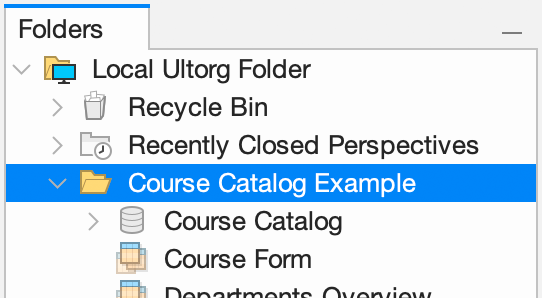
- Click Export Perspectives in the File menu. You will be prompted to save a file (e.g. “Course Catalog Example.ult”) that you can share with other Ultorg users.
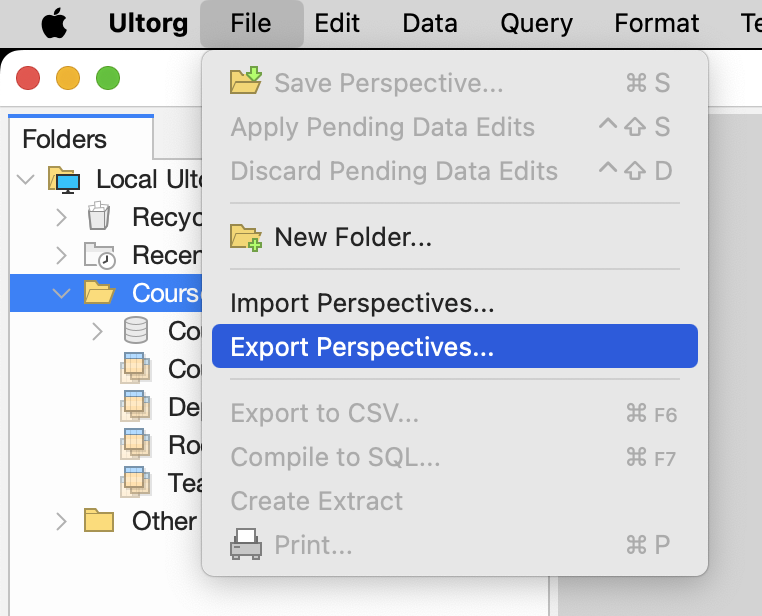
You can find an example export file here. It contains some sample perspectives over the demo database that is bundled with Ultorg.
Included Content
The exported file includes the following content from the selected Ultorg folder:
- The definition of perspectives (
), including names of table columns, definitions of formulas and filters, and so on.
- The names and types of referenced data sources.
- If data sources (
) were included:
- Connection settings such as hostname, port, and connection properties.
- For database (JDBC) sources, the connection username, but no password.
- The list of available database tables (
) and schema folders (
), if any.
- Modified table defaults, if present, including the names of table columns.
- Folders (
) that you may have created to organize the exported items.
The export excludes the following:
- Passwords and authentication tokens.
- Actual data retrieved from perspective queries.
- Links tracked by the Link to Perspective feature.
- Data extracts. A warning will be shown if the exported folder contains extracts.
Import Perspectives
To import a previously exported Ultorg folder, click Import Perspectives in the File menu, and select the file to import. The imported folder will appear in the Folders sidebar.

If the folder already exists, you will be prompted to replace it.

The Import Perspectives action remembers the file you last selected, so subsequent re-imports can be done easily if you receive an updated file.
Changing Connection Settings
You can modify connection settings by right-clicking a data source () and clicking Edit Connection Details. This may sometimes be necessary after an import, e.g. to change the username of a database connection, or to change the path to a local Excel file.
If the data source was in an imported folder, you can move it out of said folder to avoid it being replaced the next time you invoke Import Perspectives. That way, your modified connection details remain intact even if you need to update your imported perspectives.
Data Source Mappings
Shared perspectives may reference data sources that do not exist on your local machine. The first time you open a perspective, you may be prompted to create or select a data source.
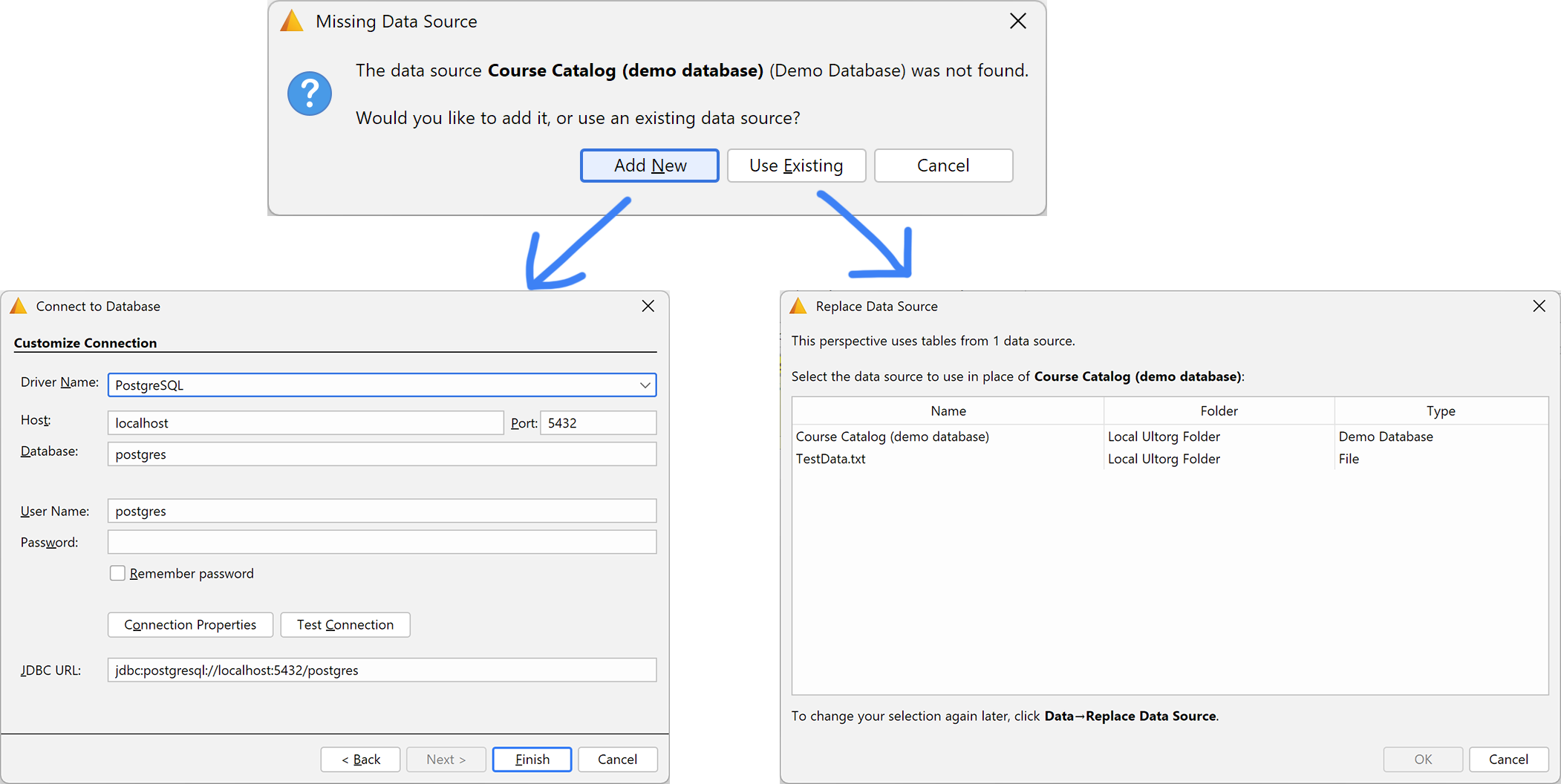
The selection will be remembered for the future, so that further shared perspectives may be opened without re-selecting the data source. If there are multiple original data sources, each mapping will be tracked separately.
To change the mapping of remote and local data sources, use Replace Data Source. Remembered data source mappings will be reset as appropriate.